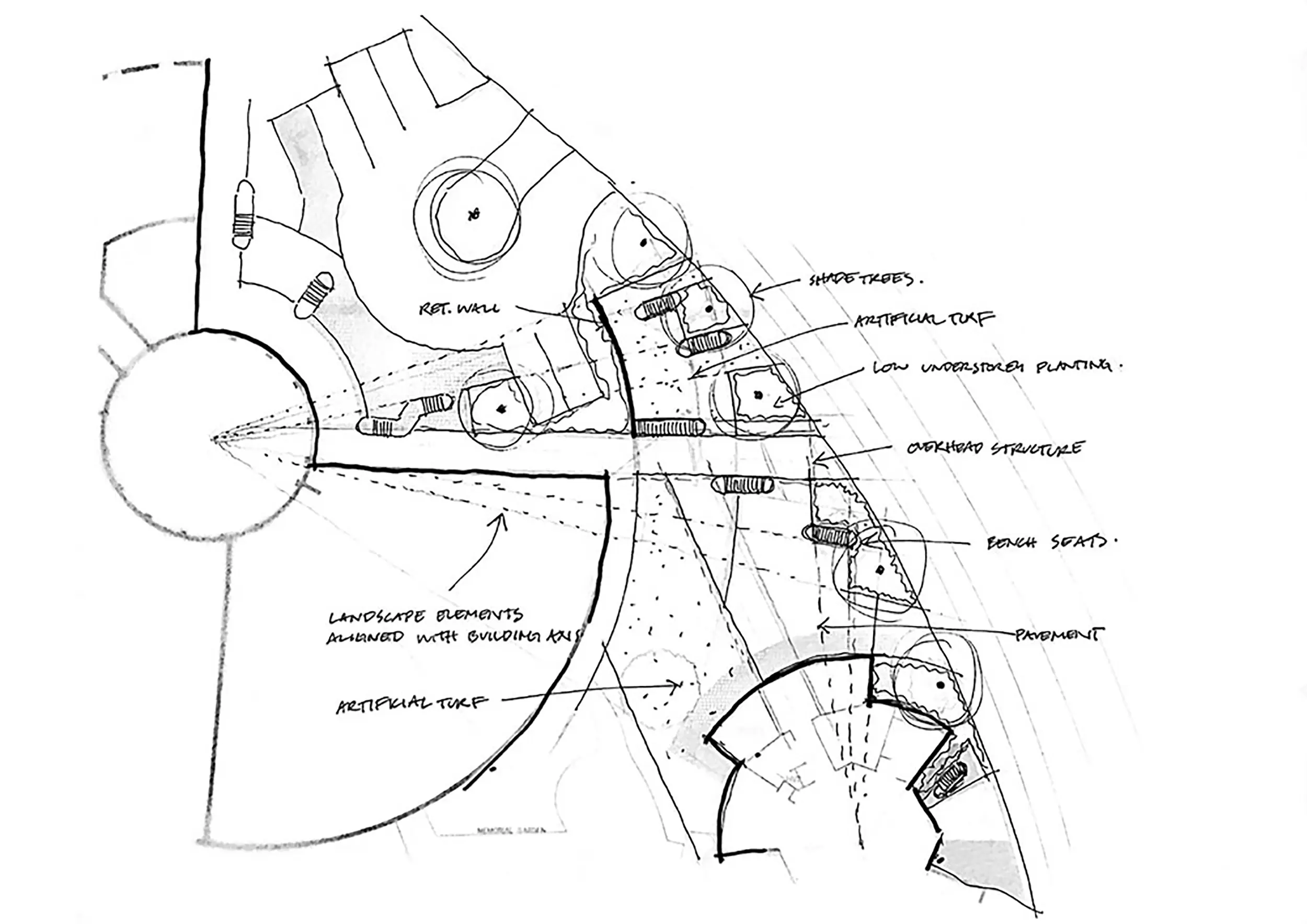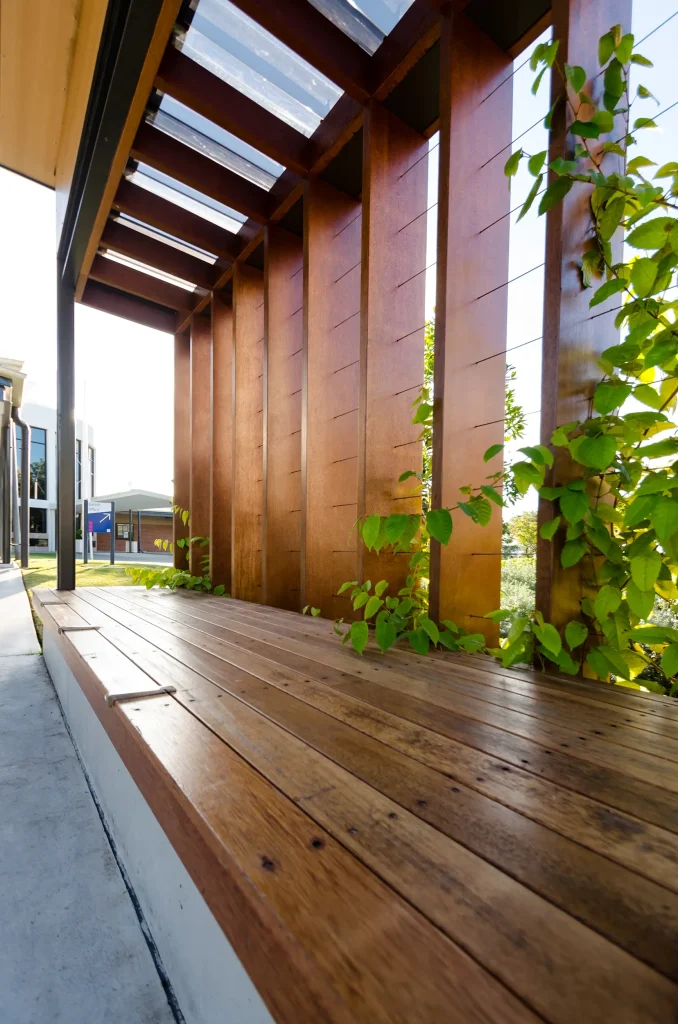project team
Client | Robina Anglican Church
Architect | Elevation Architecture
Structural | Westera Partners
Mechanical | MDA Consulting Engineers
Hydraulic | MDA Consulting Engineers
Electrical | MDA Consulting Engineers
Photographer | Paul Griffiths
enhancing connectivity and site appeal
As part of a refurbishment project, Robina Anglican Church sought to activate the site frontage to strengthen its connection with the street and local neighbourhood. In collaboration with Elevation Architecture, Citicene developed landscape concepts aimed at increasing the usability of the site frontage while seamlessly integrating it with the proposed building renovations.
To achieve these goals, several key landscape elements were incorporated into the design, ensuring a cohesive relationship between the new building elements and the existing landscape.

activating the site frontage
A welcoming entry was designed to create a strong visual and physical connection from the street to the main building entrance. This approach enhances accessibility and invites greater community interaction with the site
The site structure and hierarchy were reinforced through strategic planting selection and high-quality finishes, providing clear wayfinding and a well-defined landscape framework. Multi-purpose spaces were introduced to cater to both site users and the broader community, supporting a variety of activities while enhancing the site’s functionality. A landscape buffer was also implemented along the frontage, meeting GCCC Landscape Code requirements and contributing to the overall aesthetic and environmental benefits of the project.

sustainable and functional landscape design
The planting strategy prioritized hardy, drought-tolerant, and low-maintenance species to ensure long-term sustainability and resilience. Soft landscaping elements were incorporated to screen and soften the built form, creating a more inviting and visually pleasing environment. Additionally, existing trees and understorey vegetation were assessed and retained where possible, maintaining the site’s natural character and ecological value.
By integrating these landscape considerations, the project successfully enhances the site’s connectivity, usability, and visual appeal, transforming it into a vibrant and well-connected community space.

memorial garden redesign
As part of the refurbishment, the memorial garden along the side of the church was redesigned to create a peaceful and reflective space. The redesign carefully preserved existing plantings, including roses that had been planted in memory of past church members. These roses, primarily Rosa hybrid varieties, were rejuvenated through careful pruning, soil enhancement, and companion plantings to ensure their continued vitality and prominence within the garden.
The garden was enhanced with additional plantings and thoughtful landscaping elements to create a serene environment for remembrance and contemplation. This revitalized space provides a meaningful connection to the church’s history while offering a place for quiet reflection and community gathering.
To provide a sense of enclosure and vertical interest, overhead steel cables were installed as a trellis, allowing climbing plants such as Star Jasmine (Trachelospermum jasminoides) to weave through the structure, adding fragrance and seasonal beauty. Strategically placed seating benches offer areas for quiet contemplation, encouraging visitors to pause and reflect in a tranquil setting.
Stepping stones were introduced throughout the garden, ensuring easy access while maintaining a natural, meandering flow. Additionally, high-quality existing vegetation was carefully assessed and retained, reinforcing the garden’s established character and ecological value.
This revitalized memorial garden seamlessly blends history with thoughtful design, offering a serene sanctuary for remembrance and community gathering.
